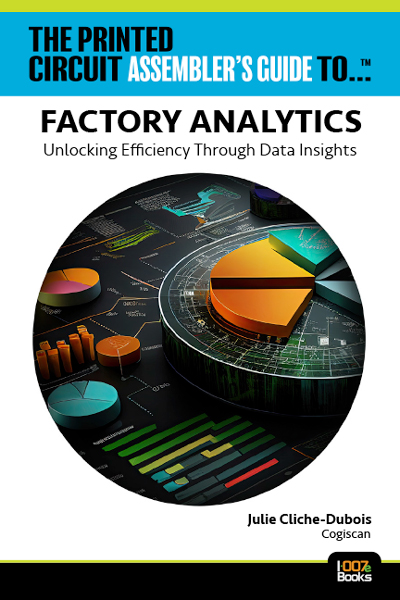-

- News
- Books
Featured Books
- pcb007 Magazine
Latest Issues
Current Issue
Inner Layer Precision & Yields
In this issue, we examine the critical nature of building precisions into your inner layers and assessing their pass/fail status as early as possible. Whether it’s using automation to cut down on handling issues, identifying defects earlier, or replacing an old line...

Engineering Economics
The real cost to manufacture a PCB encompasses everything that goes into making the product: the materials and other value-added supplies, machine and personnel costs, and most importantly, your quality. A hard look at real costs seems wholly appropriate.

Alternate Metallization Processes
Traditional electroless copper and electroless copper immersion gold have been primary PCB plating methods for decades. But alternative plating metals and processes have been introduced over the past few years as miniaturization and advanced packaging continue to develop.
- Articles
- Columns
Search Console
- Links
- Media kit
||| MENU - pcb007 Magazine
Happy New Year From I-Connect007
January 1, 2025 | Nolan Johnson, I-Connect007Estimated reading time: 1 minute
As I-Connect007 observes the New Year’s Day holiday, we also wish you and yours a prosperous new year. We will be back covering the news of the industry tomorrow, January 2, 2025, according to the Gregorian calendar. Why do we follow the Gregorian format anyway?
Over the past two millennia, Western civilization has relied upon two similar but different calendars: the Gregorian and the Julian. Julius Caesar introduced the Julian calendar in 46 BC. The Julian calendar was ultimately replaced by the Gregorian calendar in 1582 when Pope Gregory XIII introduced it in an effort to keep the calendar more closely aligned with the seasons.
Both calendars feature 12 months and 365 days, but they differ in how they calculate leap years. For example, the Julian calendar adds a leap day every four years. The Gregorian calendar, in an effort to be more accurate, omits the leap day on century years which are not exactly divisible by four.
Complicated? A little. But the result is that the Gregorian calendar is a few minutes shorter than the Julian calendar. The average length of a Gregorian calendar year is 365 days, 5 hours, 49 minutes, and 20 seconds, which is only 34 seconds longer than the actual year. Interestingly, the U.S. military uses the Julian calendar to track inventory, and Julian dates are often used as time variables in astronomical software.
Our team hopes you all have a fantastic new year!
Suggested Items
PCB Market Expanding at 3.62% CAGR, To Reach $100 Billion by 2032
01/17/2025 | EINPresswire.comThe global Printed Circuit Board (PCB) Market was valued at US$72.63 billion in 2023 and is projected to exhibit steady growth over the coming years.
See You in Vienna: Speaker Spotlight on PEDC
01/16/2025 | I-Connect007 Editorial TeamVienna, Austria, is known for its amazing architecture, art museums, and classical music scene. But from now on, Vienna might also be known for its PCB design conference. IPC and FED have partnered to create a new PCB design conference in there. The Pan-European Electronics Design Conference (PEDC) takes place Jan. 29-30, 2025 at the NH Danube City hotel in Vienna.
MKS Instruments Receives 2024 Supplier Excellence Award for Innovation from Onto Innovation
01/16/2025 | MKS Instruments, Inc.MKS Instruments, Inc., a global provider of enabling technologies that transform our world, was the recipient of the 2024 Supplier Excellence Award for Innovation presented by Onto Innovation Inc.
Gartner Says Worldwide PC Shipments Increased 1.4% in Q4 2024 and 1.3% for the Year
01/16/2025 | Gartner, Inc.Worldwide PC shipments totaled 64.4 million units in the fourth quarter of 2024, a 1.4% increase from the fourth quarter of 2023, according to preliminary results by Gartner, Inc.
DuPont Reaffirms Guidance, Accelerates Electronics Spin-off
01/16/2025 | PRNewswireDuPont announced the acceleration of the separation of its Electronics business and is now targeting November 1, 2025 to complete the transaction.


